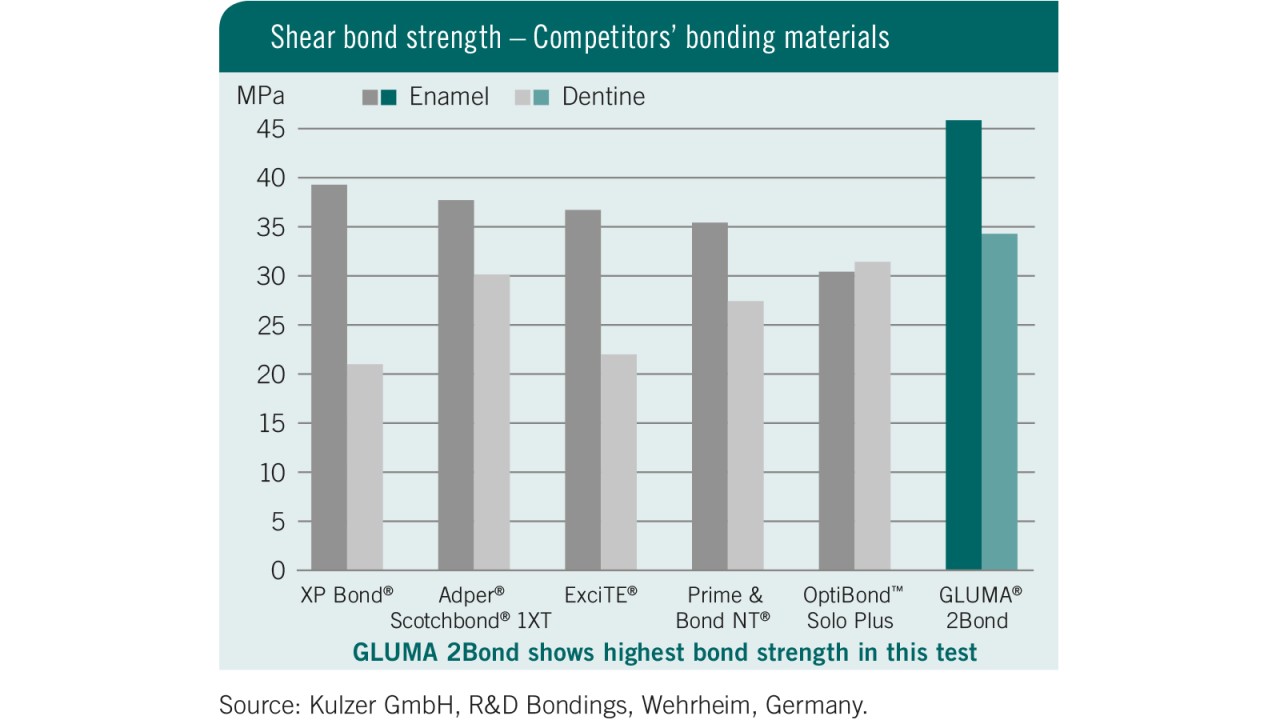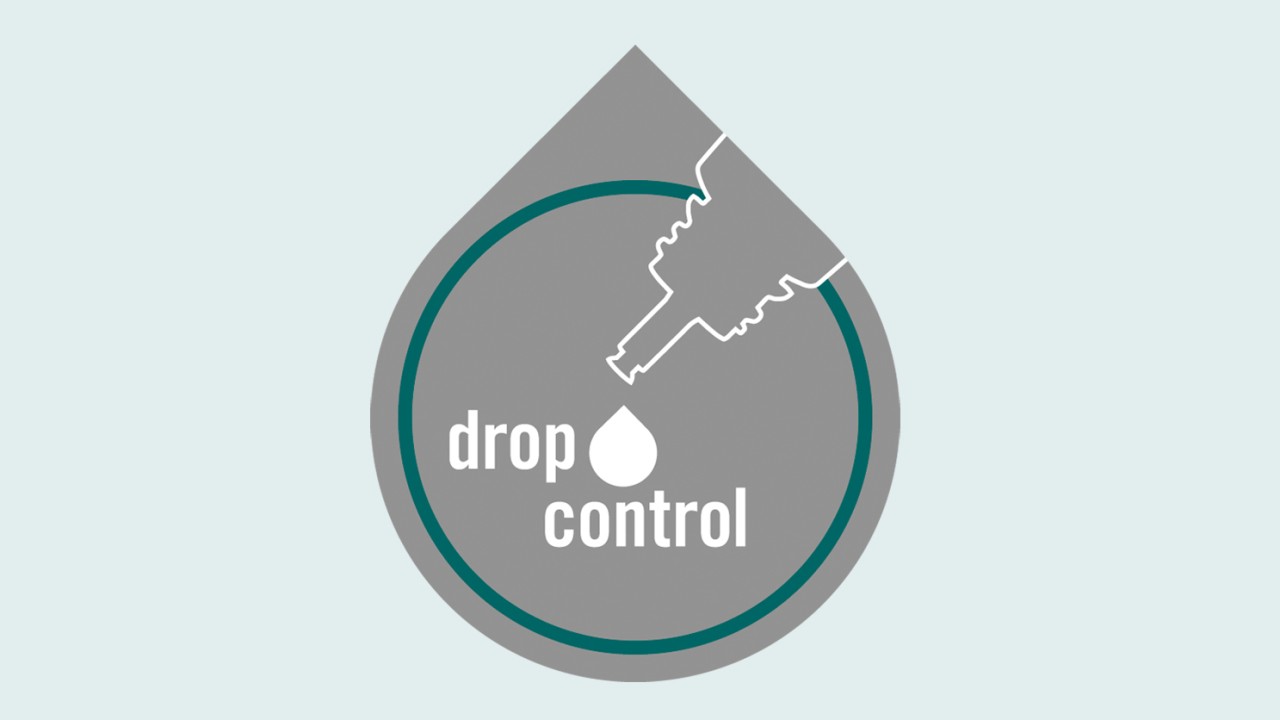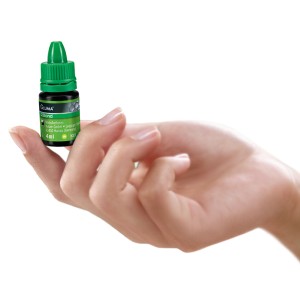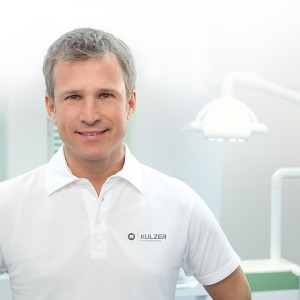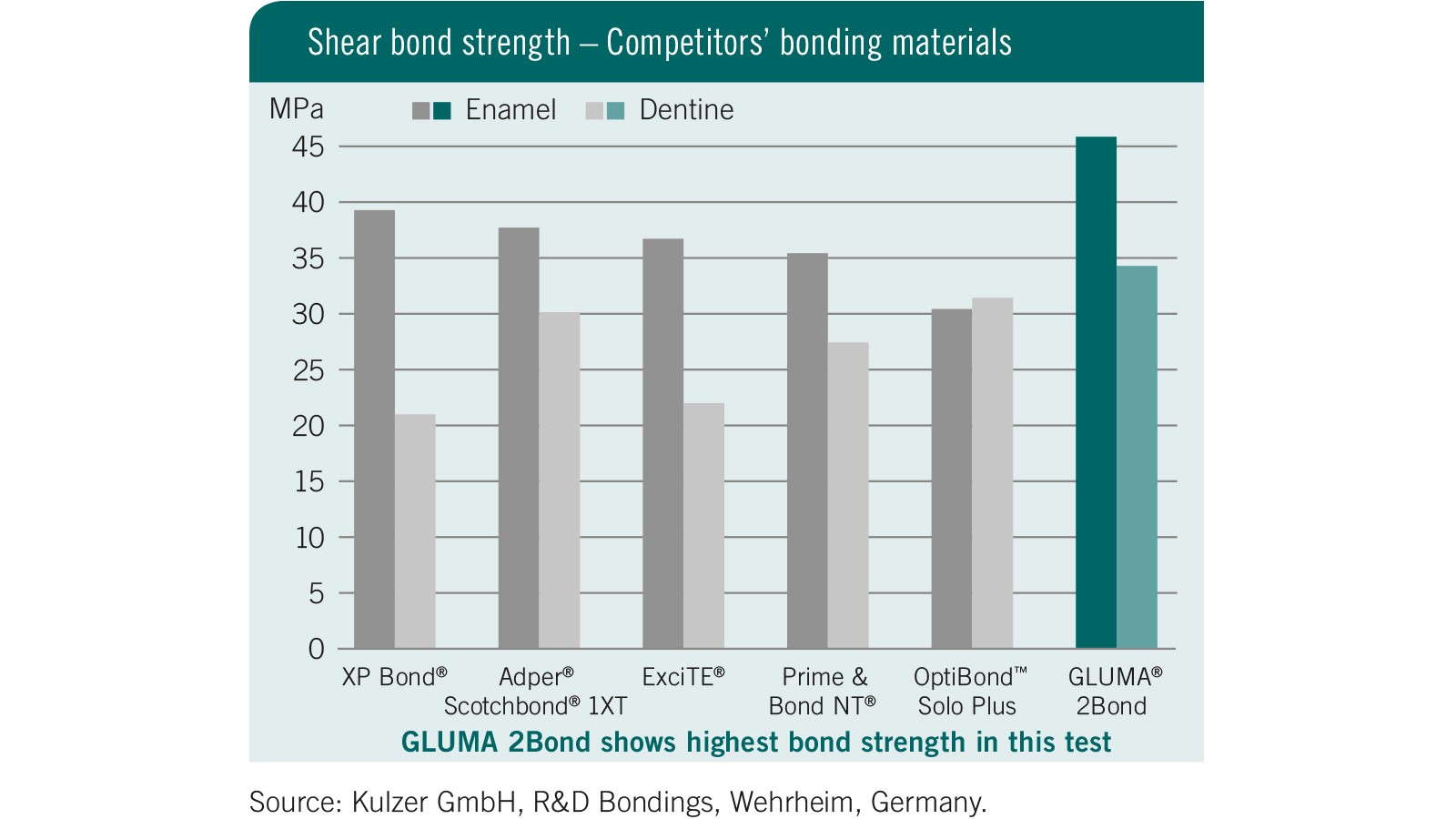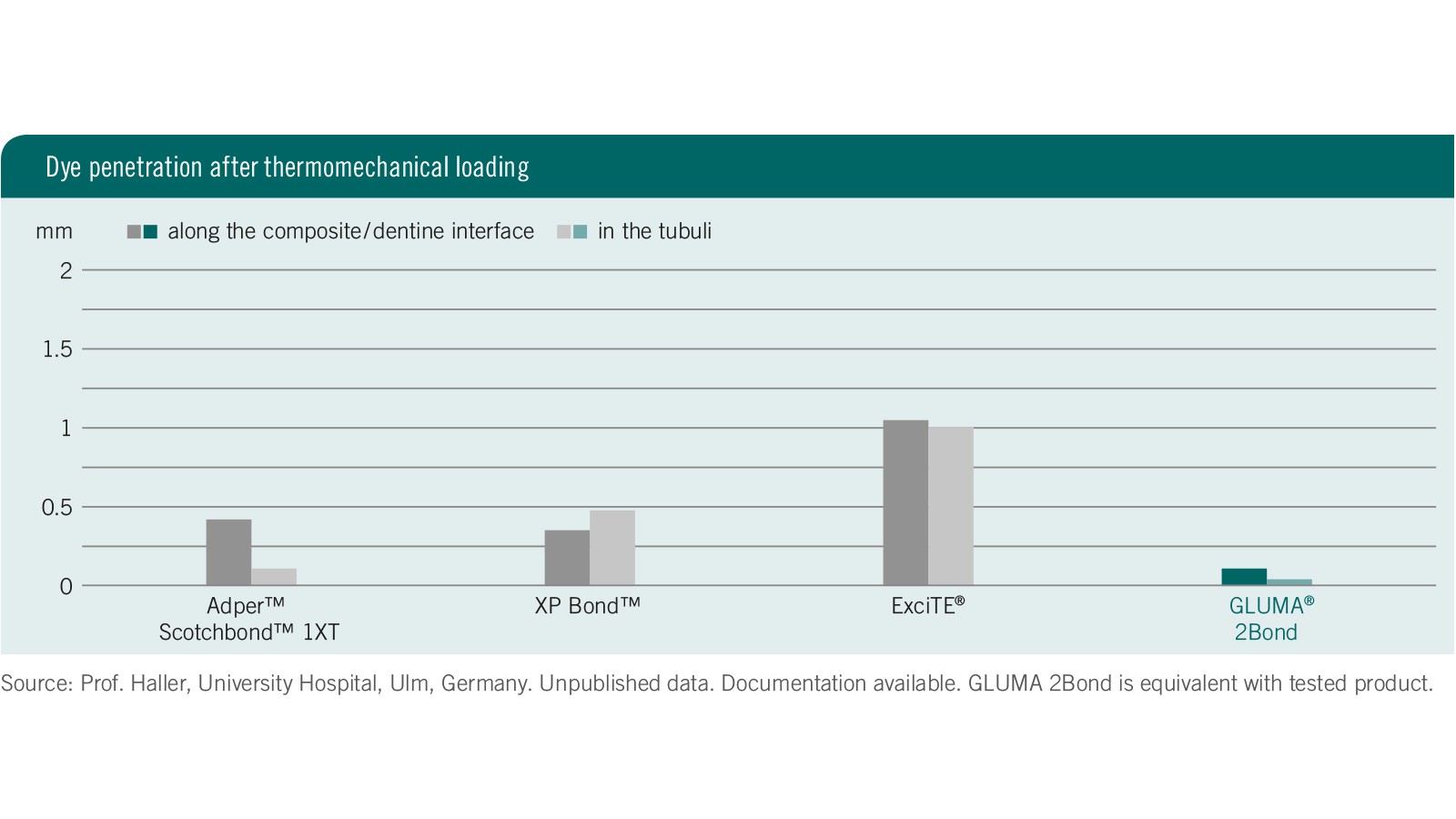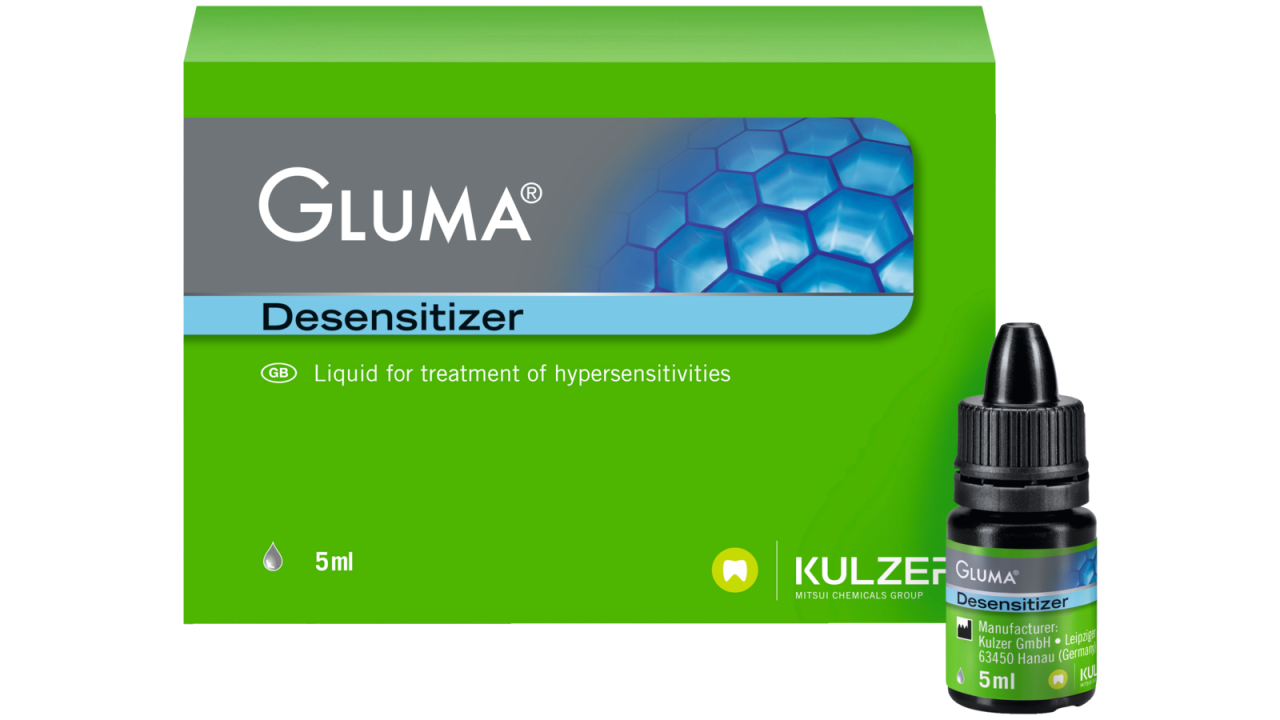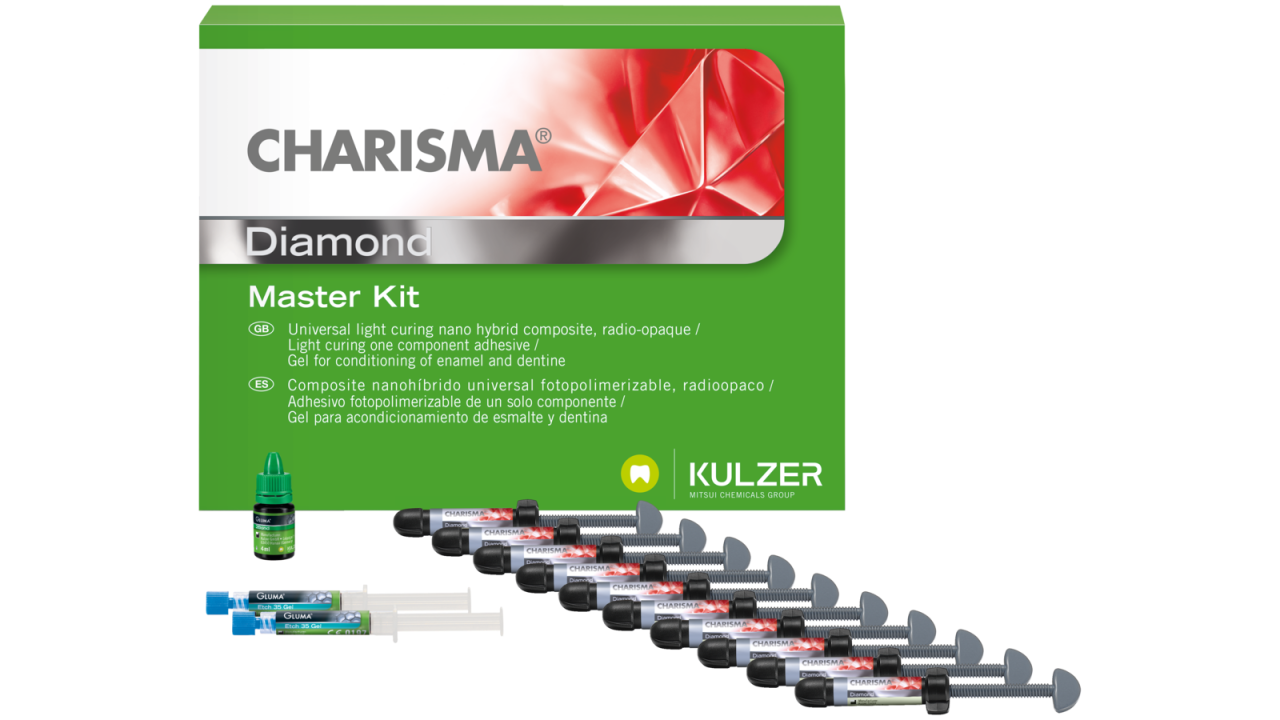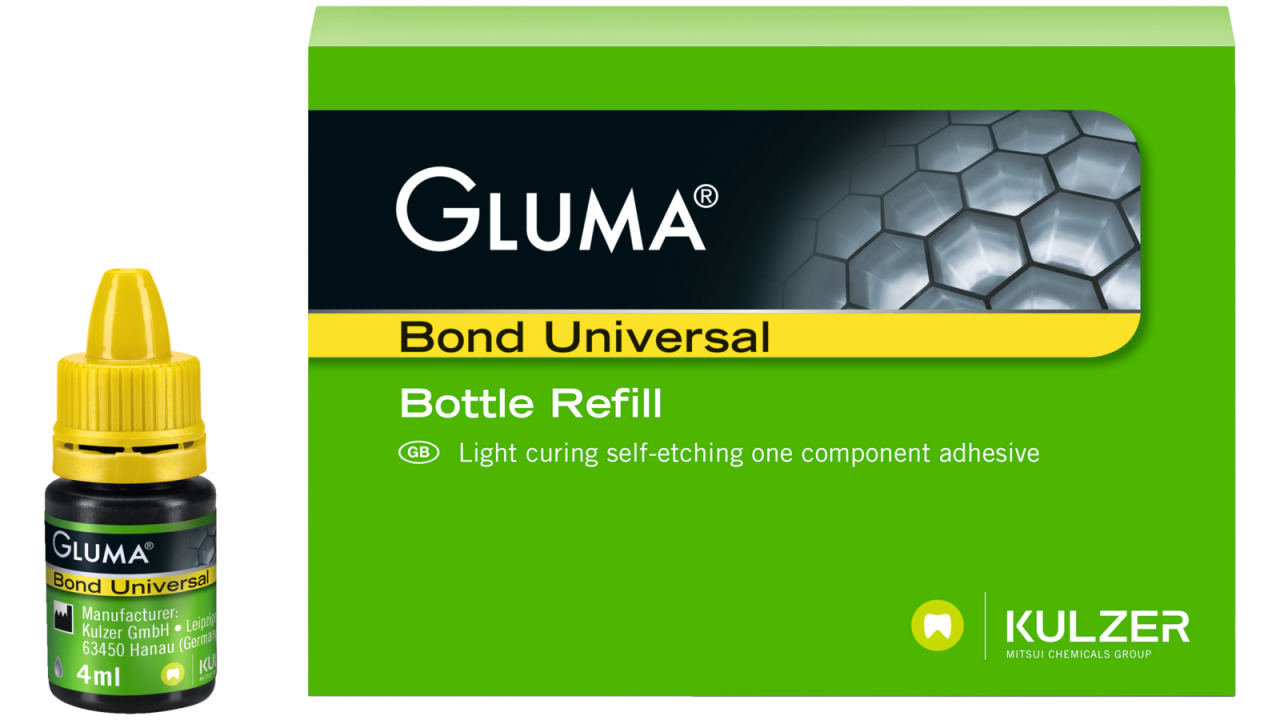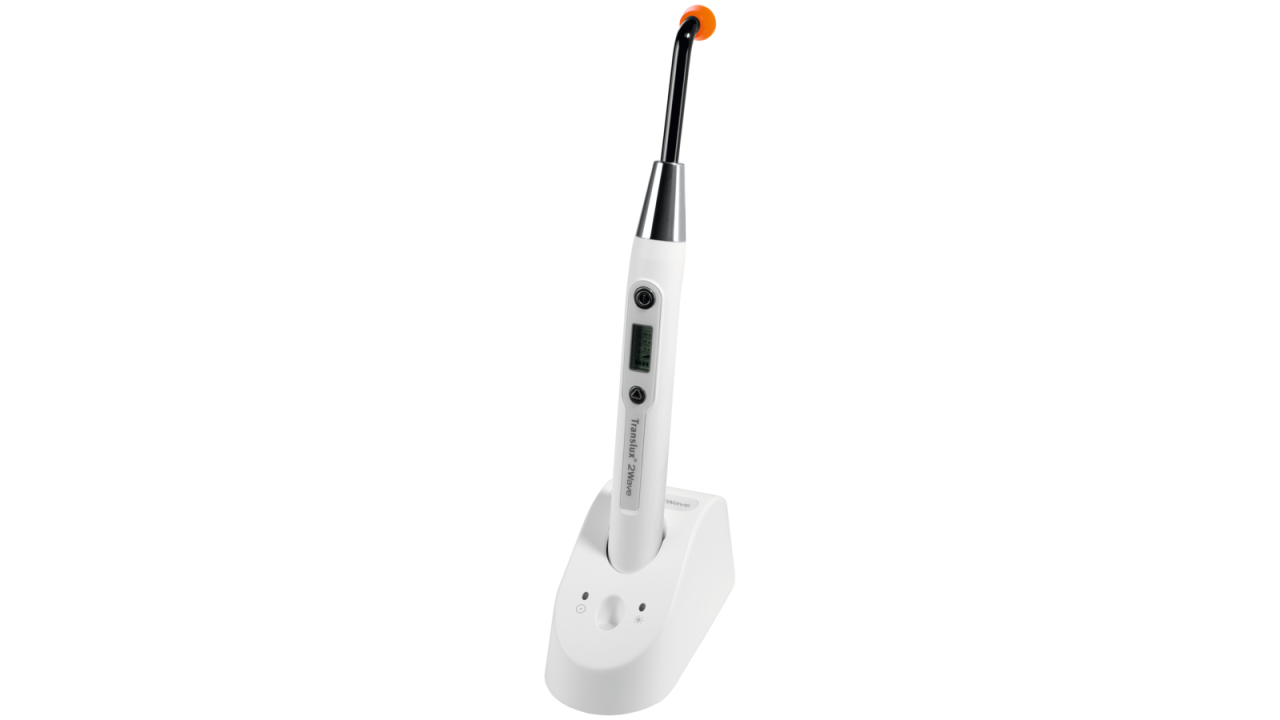Contact Kulzer International
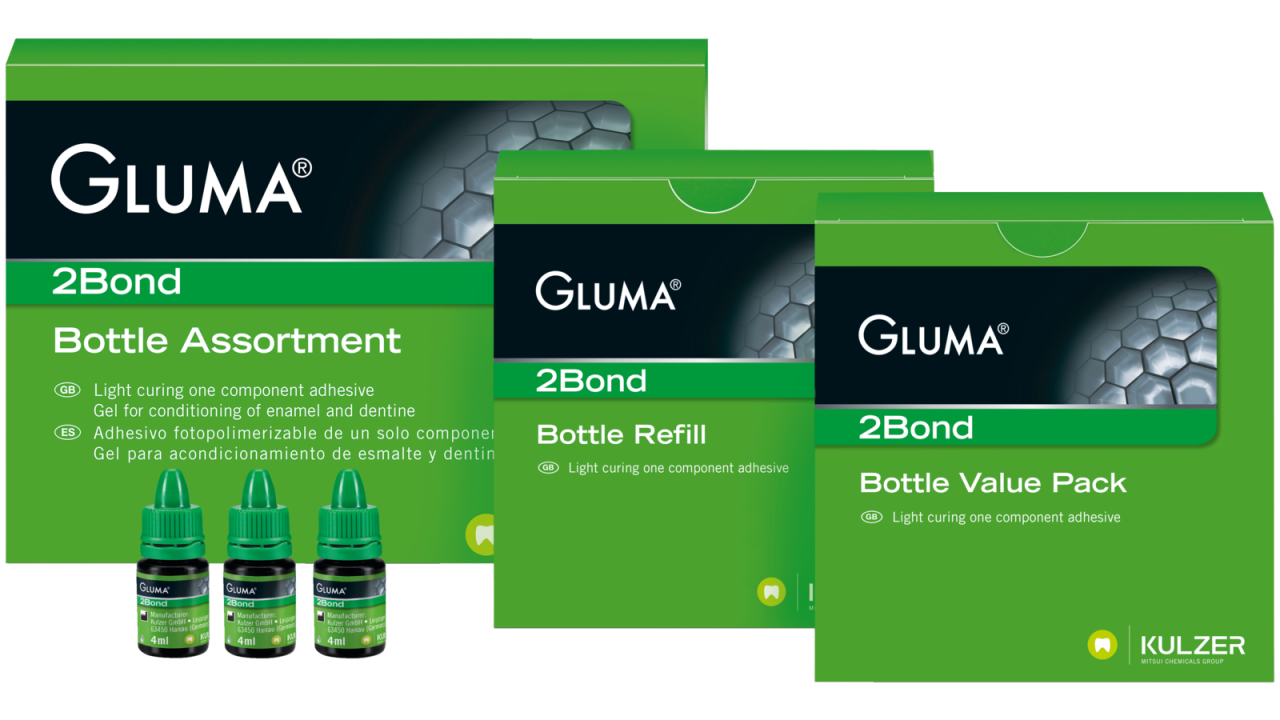
GLUMA® 2Bond
Adhesive convenience
Based on our long-term bonding expertise, we developed the Etch & Rinse adhesive system GLUMA 2Bond. It meets your everyday requirements for uncomplicated and state-of-the-art bonding. GLUMA 2Bond produces excellent adhesion to the enamel and the dentine, as well as an optimal marginal sealing. Furthermore it provides a desensitizing effect for sensitive patients or desensitization of hypersensitve areas.
Benefits
With GLUMA 2Bond, you benefit from:
- More efficiency: Due to the special formula, GLUMA 2Bond necessitates only one layer for priming, bonding and desensitizing.
- More security: GLUMA 2Bond provides excellent bond strength and ideal marginal sealing due to the innovative chemistry.
- More reliability: Numerous studies and tests have proven the bonding qualities of GLUMA 2Bond.
- More convenience: GLUMA 2Bond is a ready-to-use, one-bottle system. Simple application without prior mixing or shaking.
With GLUMA 2Bond, patients benefit from:
- Less irritation: The desensitizing effect reduces post-operative sensitivity.
- Less preparation time: GLUMA 2Bond is immediately effective.
- Less sensitivity: GLUMA 2Bond can be used to seal hypersensitive areas of the teeth.
Good to know
Indications
| Features | GLUMA Self Etch | GLUMA 2Bond | GLUMA Bond5 | GLUMA Bond Universal | ||||||||||
|---|---|---|---|---|---|---|---|---|---|---|---|---|---|---|
| Etch&Rinse, Selective Etch, Self Etch | Only self etch | Only etch&rinse | Only etch&rinse | X | ||||||||||
| Direct Restorations | X | X | X | X | ||||||||||
| Indirect Restorations | X* | X | X | X | ||||||||||
| Compatible with Self-, Dual- and Light Cure Materials without activator | - | X | X | X | ||||||||||
| Bonding to silica based ceramics without primer | - | - | - | -* | ||||||||||
| Bonding to ZrO2 and metal without primer | - | - | - | X | ||||||||||
| *in combination with a LC resin cement | *with a ceramic primer | |||||||||||||
Applications
One layer for priming, bonding and desensitising.
The handling of GLUMA 2Bond is uncomplicated and easy: After etching with GLUMA Etch followed by rinsing, only one layer of GLUMA 2Bond has to be applied. A time-consuming massage is not necessary. Easy air-drying produces the effective cross-linking of adhesive and dental surfaces. Because of its new formula and special viscosity, GLUMA 2Bond remains stationary on the tooth.
The result is a homogeneous, glossy layer on the enamel and the dentine. This is the guarantee for an excellent, durable restoration.
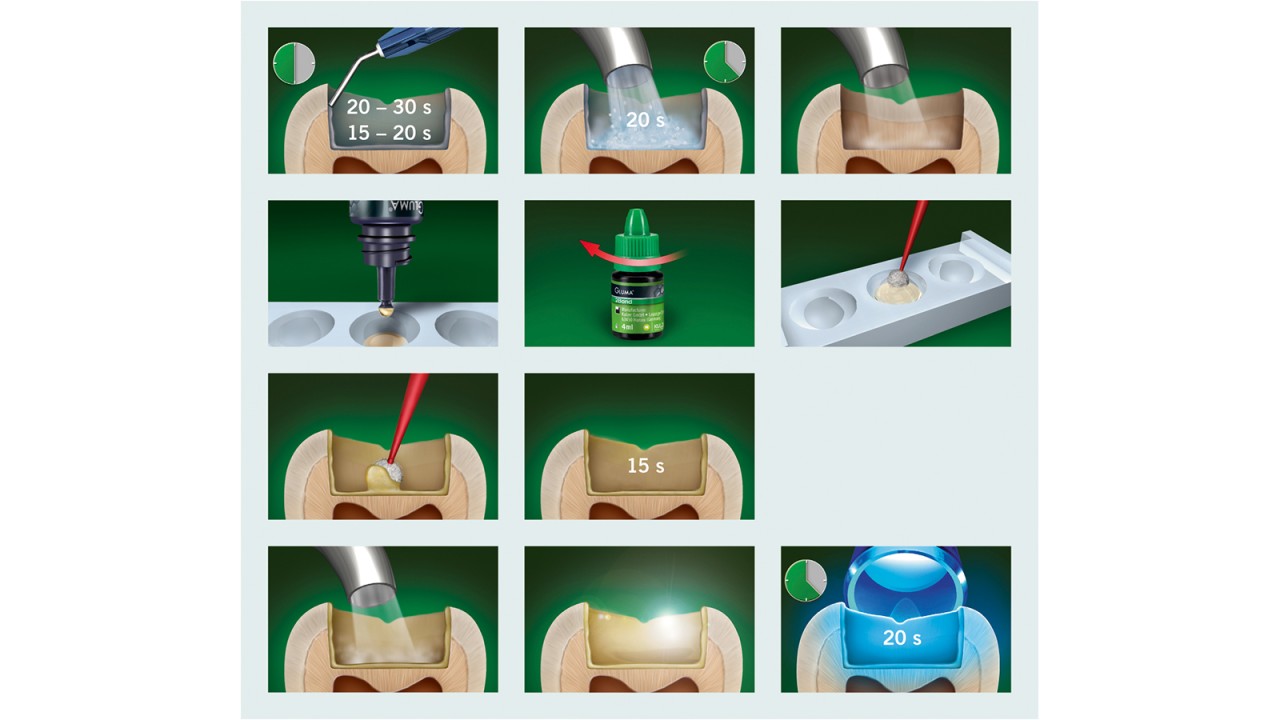
Broadly applicable
GLUMA 2Bond is the first-choice Etch&Rinse bonding system for almost all everyday indications. It is ideal for:
- Adhesive fixing of direct composite and compomer restorations.
- Adhesive fixing of indirect laboratory-fabricated ceramic and composite restorations (inlays, onlays, veneers and crowns).
- Treatment of hypersensitive tooth regions.
Science
GLUMA® 2Bond – Excellent bond strengths with the GLUMA® 2Bond technique
Due to its bond strength, GLUMA 2Bond is suitable for every type of restoration. The new 5th generation bonding system is based on modern nanofillers. GLUMA 2Bond produces excellent adhesion to the enamel and the dentine, as well as an optimal marginal sealing. Furthermore, GLUMA 2Bond contains the GLUMA Desensitizer agent, a glutardialdehyde product which has been confirmed clinically successful for more than 10 years. GLUMA 2Bond is ideal for sensitive patients or the desensitisation of hypersensitive areas.
FAQ
What is meant by total-etch?
The term total-etch is used for simultaneous etching of enamel and dentine – for example with phosphoric acid – to remove the smear layer and create microporosities for anchoring the adhesive. The etching always starts on the enamel, then the dentine is also involved. Enamel is etched for approximately 20–30 seconds, dentine for 15 seconds. Excessive etching can cause hypersensitivity and incomplete hybrid layers. The term “Total Etch” is especially used in the Anglo-American countries, also as a synonym for 5th generation etch and rinse two-step adhesives.
What is meant with wet/ moist bonding?
This term describes the following situation: The exposed collagen fibres still contain some water and do not dry out completely after etching. Blowing off only removes excess water. The water remaining in the interfibrillar crevices protects them protects them. Otherwise the collagen network can collaps which results in a reduction of penetration depth of the applied adhesive.
How many applications can be performed with a 4 ml bottle of GLUMA 2Bond?
Similar to GLUMA Self Etch, around 160 drops can be taken from a bottle of GLUMA 2Bond. The number of applications performed depends on the size of restoration.
Can a bottle of GLUMA 2Bond be kept outside the fridge?
GLUMA 2Bond can generally be kept at a maximum of 25°C outside the fridge, but GLUMA 2Bond can also be kept in the fridge, of course.
Processing time of GLUMA 2Bond: Three to five minutes?
Like every adhesive, GLUMA 2Bond contains solvent. Because GLUMA 2Bond is based on ethanol, the composition and effectiveness changes if the material has been dispensed for a longer period (more than 3 to 5 minutes). Close the bottle after use to avoid evaporation of ethanol.
How long can GLUMA 2Bond be used after opening?
3 to 5 minutes
Is it necessary to subsequently rub in the applied layer of GLUMA 2Bond?
No, agitation is not intended and is not necessary.
Should GLUMA 2Bond be used on uncut enamel surfaces?
Yes, this is possible. GLUMA 2Bond can be used on both cut as well as uncut enamel, as the seperate etching step is always conducted before applying GLUMA 2Bond.
Should GLUMA 2Bond be used on sclerotically modified dentine?
Yes, as the seperate etching step is performed before applying GLUMA 2Bond.
Is it possible to use another applicator?
Yes, GLUMA 2Bond contains all the active components. You can use any ethanol-resistant applicator.
Why is GLUMA 2Bond simple in handling and application?
Only one layer of GLUMA 2Bond has to be applied. Drying of this layer is very easy. The material remains stable in the cavity, no agitation is required.
How long does the additional desensitisation effect last?
The desensitisation effect in the fi lling region is permanent, as with an independent desensitiser. The desensitisation of nonrestored tooth regions remains for six months up to a year depending on the respective patient’s erosive factors.
GLUMA 2Bond as a material for direct capping?
Numerous studies lead to the recommendation of not using adhesives for this purpose. Kulzer does not recommend GLUMA 2Bond for direct capping of the pulp. It should be performed in the conventional way.
What function does glutardialdehyde have?
GLUMA 2Bond contains glutardialdehyde. This material can coagulate proteins and has a desensitising effect by blocking the open dentine canals with coagulated proteins. It is also able to cross-link the collagen fibres and therefore to prevent collapse of the collagen fibre network.


